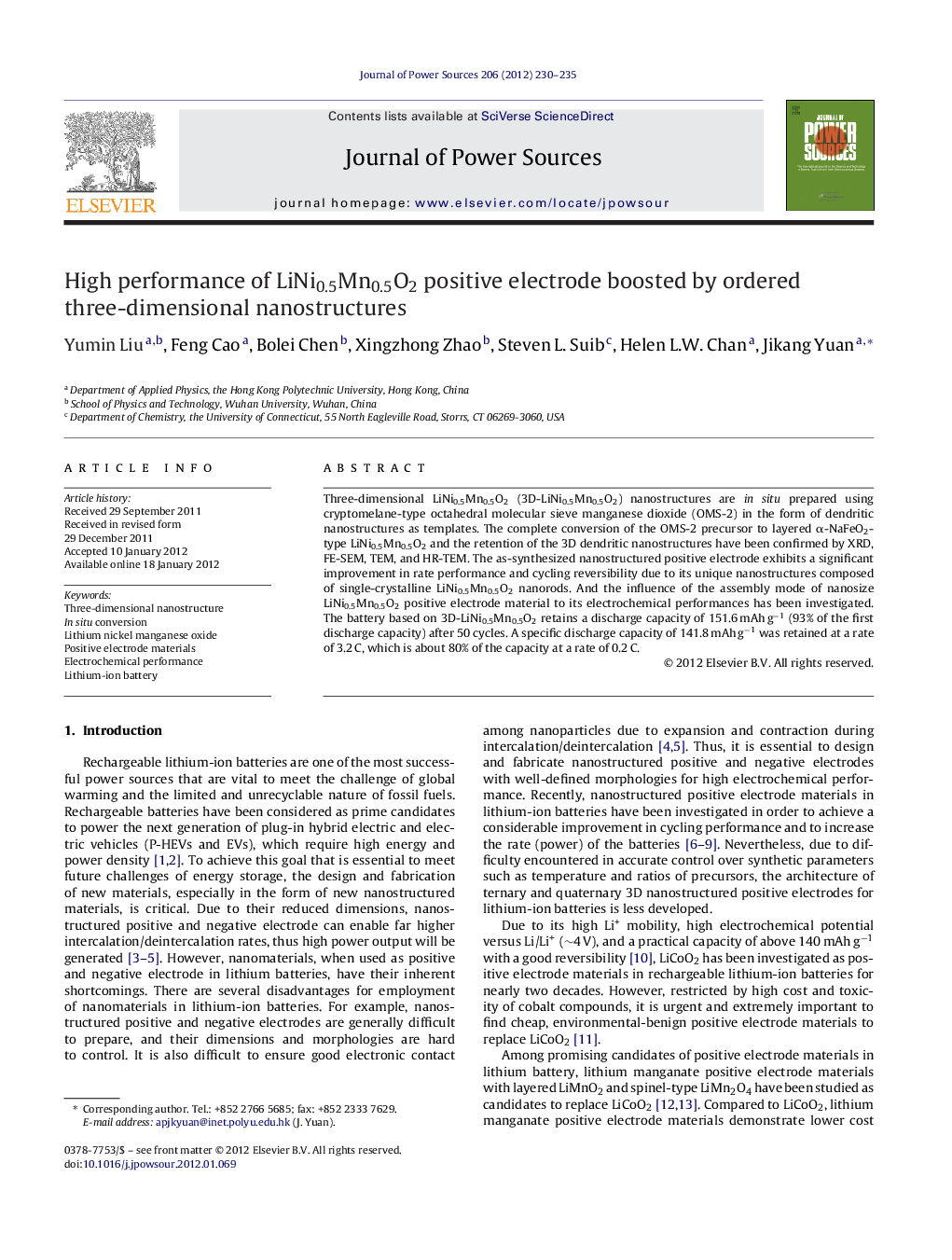| Article ID | Journal | Published Year | Pages | File Type |
|---|---|---|---|---|
| 1293080 | Journal of Power Sources | 2012 | 6 Pages |
Three-dimensional LiNi0.5Mn0.5O2 (3D-LiNi0.5Mn0.5O2) nanostructures are in situ prepared using cryptomelane-type octahedral molecular sieve manganese dioxide (OMS-2) in the form of dendritic nanostructures as templates. The complete conversion of the OMS-2 precursor to layered α-NaFeO2-type LiNi0.5Mn0.5O2 and the retention of the 3D dendritic nanostructures have been confirmed by XRD, FE-SEM, TEM, and HR-TEM. The as-synthesized nanostructured positive electrode exhibits a significant improvement in rate performance and cycling reversibility due to its unique nanostructures composed of single-crystalline LiNi0.5Mn0.5O2 nanorods. And the influence of the assembly mode of nanosize LiNi0.5Mn0.5O2 positive electrode material to its electrochemical performances has been investigated. The battery based on 3D-LiNi0.5Mn0.5O2 retains a discharge capacity of 151.6 mAh g−1 (93% of the first discharge capacity) after 50 cycles. A specific discharge capacity of 141.8 mAh g−1 was retained at a rate of 3.2 C, which is about 80% of the capacity at a rate of 0.2 C.
► LiNixMn1−xO2 with ordered three-dimensional nanostructures has been synthesized via an in situ conversion of OMS-2 dendritic nanostructures. ► This nanoarchitectured LiNi0.5Mn0.5O2 material exhibits an enhanced cycling reversibility and rate performance, due to its ordered 3D dendritic nanostructure composing of single crystal nanorods. ► This methodology of synthesizing positive electrode material with a high rate and large electrode capacity can be extended to other compositions by employing manganese oxide octahedral molecular sieve nanostructures as templates. ► The influence of the assembly mode of nanosize LiNi0.5Mn0.5O2 positive electrode material to its electrochemical performances has been directly provided.
